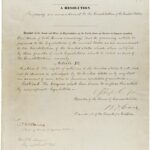The W-9 form, officially titled “Request for Taxpayer Identification Number (TIN) and Certification,” is a crucial document used in the United States for tax reporting purposes. It’s primarily used by businesses to collect information from independent contractors, freelancers, and other non-employees they hire. Before you use the information from a W-9, ensuring its accuracy and completeness is paramount. Let’s delve into the specifics of this vital form.
Understanding the Purpose of the W-9
The main purpose of a W-9 form is to allow a business (the payer) to obtain the correct Taxpayer Identification Number (TIN) from an individual or entity (the payee) they are paying. This TIN is then used to report payments made to the payee to the Internal Revenue Service (IRS). Without a valid W-9, the payer may be subject to backup withholding, meaning they have to withhold a percentage of the payment and remit it to the IRS on behalf of the payee.
Key Sections of the W-9 Form
Let’s break down the key sections of the W-9 form to better understand what information is required and why:
Line 1: Name
This line requires the full legal name of the individual or entity receiving the payment. For individuals, this should be the name as it appears on their Social Security card. For businesses, it should be the name as it appears on their legal formation documents.
Line 2: Business Name/Disregarded Entity Name, if different from line 1
If the business operates under a name different from the name provided on line 1 (e.g., a “doing business as” or DBA name), it should be entered here. This is also where a single-member LLC (SMLLC) that is treated as a disregarded entity for tax purposes would enter its name if it’s different from the owner’s name.
Line 3: Federal Tax Classification
This section requires the payee to identify their tax classification. This is a crucial element as it determines how the IRS views the entity for tax purposes. Common options include:
- Individual/Sole Proprietor/Single-Member LLC: Used by individuals operating their business as a sole proprietorship or a single-member LLC that is disregarded for tax purposes.
- C Corporation: Used by businesses that are incorporated as C corporations.
- S Corporation: Used by businesses that have elected to be treated as S corporations.
- Partnership: Used by businesses that are structured as partnerships.
- Trust/Estate: Used by trusts and estates.
- Limited Liability Company (LLC): LLCs can choose to be classified as a disregarded entity, partnership, or corporation, so they must select the appropriate option here.
- Other: Used for entities that do not fit into any of the above categories.
Line 4: Exemptions (codes apply only to certain entities, not individuals)
Certain entities are exempt from backup withholding. If the payee is exempt, they may enter an exemption code on this line. This section is most commonly used by certain businesses and entities, and typically does not apply to individuals. The W-9 instructions provide a comprehensive list of exempt payees, codes, and payment types that correspond to each code.
Lines 5 & 6: Address (number, street, and apt. or suite no.) and City, State, and ZIP code.
This is where the payee provides their complete mailing address. It’s crucial that this information is accurate, as it will be used to mail any applicable 1099 forms at the end of the year. Ensure that both lines 5 and 6 include the street address, city, state, and ZIP code.
Part I: Taxpayer Identification Number (TIN)
This is arguably the most important section of the form. The TIN is either the payee’s Social Security number (SSN) for individuals and sole proprietors, or the Employer Identification Number (EIN) for businesses. Resident aliens who do not qualify for an SSN must apply for an Individual Taxpayer Identification Number (ITIN).
- Social Security Number (SSN): Generally used by US citizens operating as individuals or sole proprietors.
- Employer Identification Number (EIN): Used by other entities and businesses; it’s associated with their business name.
Part II: Certification
This section requires the payee to certify that the information provided on the form is accurate and that they are not subject to backup withholding. By signing the form, the payee confirms that they have read and understood all the requirements. The signature can be provided either by hand or via electronic signature.
Why is the W-9 Important?
The W-9 form is vital for several reasons:
- Accurate Tax Reporting: It ensures that businesses report payments to the IRS under the correct TIN, preventing potential issues with tax compliance.
- Avoid Backup Withholding: If a payee fails to provide a valid W-9, the payer is required to withhold a percentage of the payment (backup withholding) and remit it to the IRS.
- Legal Requirement: Providing a W-9 is a legal requirement for individuals and entities receiving payments for services rendered.
Who Needs to Fill Out a W-9?
Any individual or entity that is considered an independent contractor, freelancer, or non-employee who receives payments from a business typically needs to fill out a W-9 form. This includes:
- Freelancers
- Consultants
- Independent contractors
- Self-employed individuals
- Partnerships
- LLCs
- Corporations
When is a W-9 Required?
A W-9 should be requested before any payments are made to a new vendor or service provider. It’s a best practice to have a W-9 on file for all individuals and entities you pay for services.
Consequences of Not Providing a W-9
Failing to provide a W-9 can lead to several consequences:
- Backup Withholding: The payer will be required to withhold a percentage of your payments and remit it to the IRS. This can significantly reduce your income.
- Potential Penalties: The IRS may impose penalties for failing to provide accurate information or for refusing to provide a W-9 when requested.
- Delayed Payments: The payer may delay payments until a valid W-9 is received.
Conclusion
The W-9 form is an essential document for both payers and payees. Understanding its purpose and how to complete it accurately can help ensure smooth tax reporting and avoid potential penalties. By following the guidelines outlined in this guide, you can confidently navigate the W-9 process and maintain compliance with IRS regulations.

